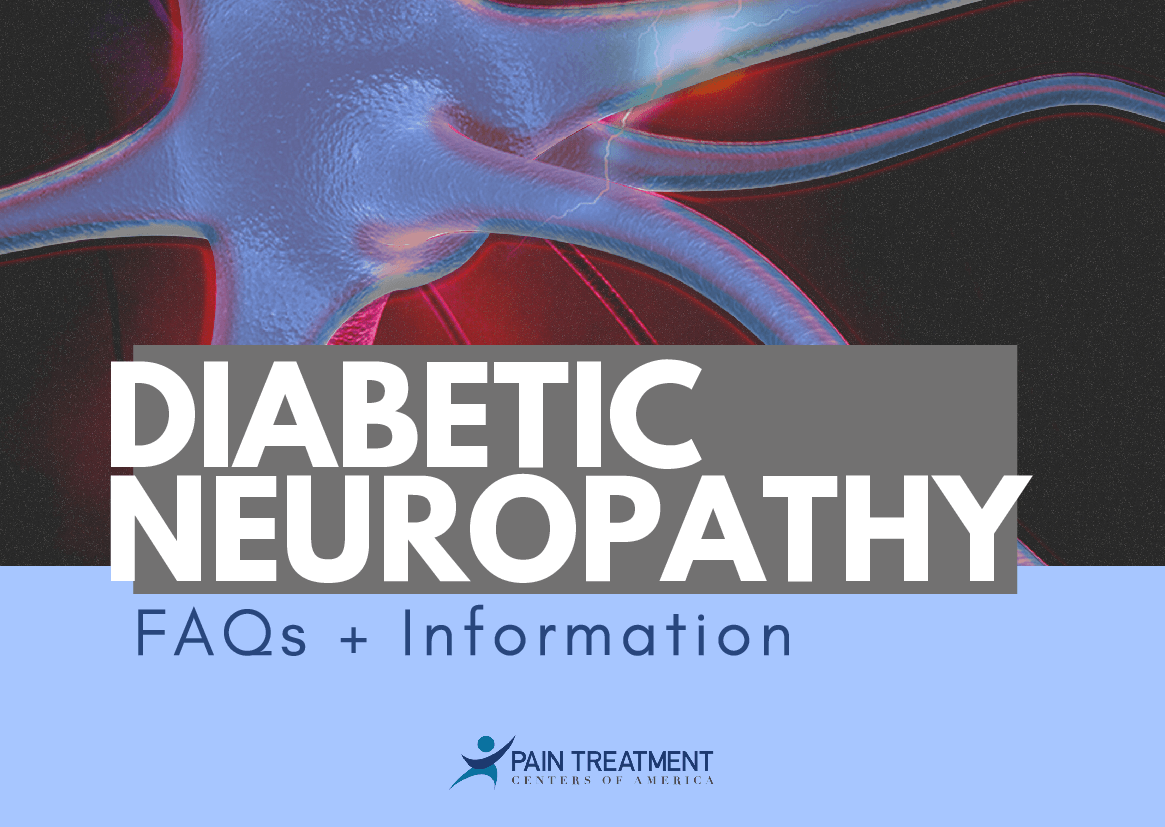Call for more information: (844) 215-0731
New Patient Department:
(501) 254-0967
Referrals (Fax): (888) 630-8885
Medical Records (Fax): (501) 476-5707
Diabetic Neuropathy FAQs and Info

Diabetes impacts multiple organs and their functions. Poorly controlled diabetes can cause cardiovascular issues, kidney problems, vision problems and nerve problems.
One of the most common side effects of diabetes is damage to the nerves. This condition is known as diabetic neuropathy. DN causes a number of painful symptoms, including shooting pains, numbness, tingling and muscle pain.
It is extremely important for people with diabetes to be regularly screened for diabetic neuropathy. It is also important for diabetics to understand the signs and symptoms of this condition.
Here are some important FAQs and information.
What is Diabetic Neuropathy?
Diabetic neuropathy is nerve damage that occurs in up to 50% of people with diabetes1.
Individuals with Type 2 diabetes are recommended to begin screening for diabetic neuropathy
immediately following diagnosis. For individuals with Type 1 diabetes, screening is recommended to begin
five years after diagnosis2.
Some patients experience few or no symptoms from this condition, while others may experience pain, tingling and other symptoms.
Why Does Diabetes Cause Neuropathy?
Diabetes that isn’t carefully managed causes ongoing high blood glucose levels. Over time, high blood glucose causes damage and malfunction in nerve cells, most commonly in the peripheral nerves.
Diabetic peripheral neuropathy occurs when the peripheral nerves are damaged by sustained high blood sugar3.
Types of Diabetic Neuropathy
Of the four major types of neuropathy that affects people with diabetes, three are considered polyneuropathy. Polyneuropathy is nerve damage that affects multiple nerves.
There are four main types of neuropathy common in people with diabetes:
Peripheral Neuropathy: This is the
most common form of diabetic neuropathy. Peripheral neuropathy damages the peripheral nerves. This conditions most commonly affects the feet and legs.
Proximal Neuropathy: This form of neuropathy is often called diabetic amyotrophy. Proximal neuropathy mainly affects the muscles, causing muscle weakness and sciatica. This condition is the second-most common form of neuropathy in diabetics.
Autonomic Neuropathy: This form of neuropathy affects the autonomic nerves (those that control involuntary bodily functions). The urinary tract, cardiovascular system, genital organs and digestive system are commonly impacted by autonomic neuropathy.
Focal Neuropathy: Focal neuropathy is the only form of diabetic neuropathy that is categorized as mononeuropathy. Focal neuropathy affects one specific nerve, most commonly those in the head and eyes. Because it affects only single nerves, focal neuropathy has different symptoms and complications than other types of neuropathy.
What Are the Symptoms of Diabetic Neuropathy?
The most common symptoms of diabetic peripheral neuropathy include:
- Numbness, tingling, and pain in the feet and legs
- Sharp or cramping pain in the feet and legs
- Hypersensitivity to temperature and touch
- Slow healing or non-healing wounds on the legs and feet
Common symptoms of
autonomic neuropathy include:
- Reduced awareness of low blood sugar
- Bladder problems
- Bowel problems
- Gastroparesis (slow stomach emptying)
- Issues with sexual response
Common symptoms of
proximal neuropathy include severe
pain in the stomach, hips and thighs. Other symptoms include shrinking or weakened muscles in the thighs.
The most common symptoms of focal neuropathy are vision issues, including
double vision and aching behind one of the eyes. Other symptoms include Bell’s palsy, weakness in the hands and tingling in the hands.
Treatment for Diabetic Neuropathy Pain
If you are a diabetic and are concerned about neuropathy, it’s important to visit your doctor as soon as possible. A diagnosis can help you determine which lifestyle changes and treatments may help you.
If you’re suffering from debilitating neuropathy pain due to diabetes, a pain specialist may be able to help you.
Treatment options for diabetic neuropathy include medical management, certain medications, nerve blocks and
spinal cord stimulation therapy.
Pain Treatment Centers of America specializes in
treating painful diabetic neuropathy at each of our ten clinics across Arkansas.
Contact us today to learn more about our treatments or to schedule your appointment.
Sources:
- "Epidemiology of Peripheral Neuropathy and ... - NCBI - NIH." 27 Aug. 2019, .https://www.ncbi.nlm.nih.gov/pmc/articles/PMC6755905/.
- "Simple tests to screen for diabetic peripheral ... - NCBI - NIH." 30 Jul. 2018, https://www.ncbi.nlm.nih.gov/pmc/articles/PMC6513498/.
- "Why You Need to Control Your Blood Sugar to Avoid Diabetic ...." 20 Feb. 2020, https://health.clevelandclinic.org/high-blood-sugar-toxic-nerves-heres-avoid/.




Call usReferrals (Fax)(888) 630-8885
Patient Support Hours
Monday - Thursday 8:00 - 5:00

All Rights Reserved | Pain Treatment Centers of America | Arkansas | Mississippi | Texas



